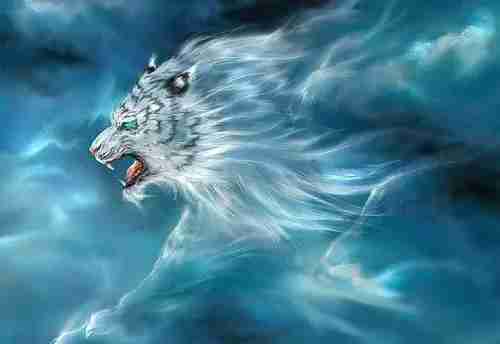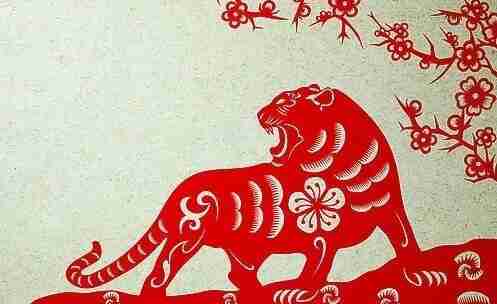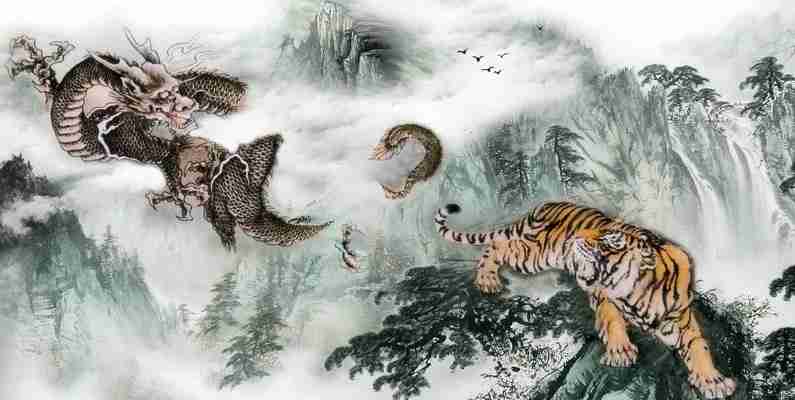Tigers are majestic creatures that are highly revered in China. It is loved not just for its beauty but for its ferocity as well. It is among the most important creatures in China, along with dragons and phoenixes. The Chinese have shared a close relationship with tigers since Ancient China. As such Tigers have many symbolic attributes in Chinese culture.
In this post, we will discuss the role Tigers play in Chinese culture and mythology. We will explore what they symbolize and the meanings they carry, especially during festivals like the Chinese New Year. We will also look at its relation to the dragon, another famed creature in China.
How To Say Tiger In Chinese?

The Chinese word for Tiger is Láo Hu. The word Lao is pronounced as ‘lou’ with a rising tone while the word Hu is pronounced as ‘hoo’ with a quick fall and rising tone. Note that Láo is normally written as lǎo, but when it follows third tones with a fall and rise tone it changes to a rising tone.
There are several other names used to refer to Tigers in Chinese, beginning with the nickname Da Mao, which means big cat. Another name used is Shan Jun which means master of the mountains. You can also use other names like Da Chong, Yu Tu, or Biao.
Tiger In Chinese Mythology.

According to Chinese folklore, Tigers are powerful creatures. They have many powers, including the ability to ward off evil spirits, thieves and prevent fire (the three main disasters of Chinese households). That is why even today, you will find pictures of Tigers hang by the entrance of a Chinese building to act as guardians and scare off any evil. Children are also made to wear clothes and shoes embroidered with tiger heads to protect them from the evil eye. They even sleep in Tiger beddings to ensure they remain robust.
Based on Ancient Chinese mythology there are believed to be five tigers who are responsible for balancing the cosmic forces and maintain harmony in the universe. The first tiger is the Yellow tiger. It is the supreme ruler over all the five and symbolizes the sun. The white tiger is in charge of Fall and controls the metal element. The Blue tiger rules over spring and the earth element. The Black tiger is in charge of winter and the water element. Last but not least, is the Red tiger who rules over summer and controls the fire element.
Tigers also appear in much classic Chinese literature. They are often portrayed as the main protagonists of the story. In many legends, they are described as killing evil men and saving the righteous as well as fighting off evil forces. In Daoist religion, Zhang Daoling, the ‘First Heaven Master’ is depicted riding a Tiger as he escorts the dead to their final destination wielding a demon-dispelling sword.
What Does The Tiger Mean In Chinese New Year?

Being a powerful creature in Chinese culture, the Tiger is among the animals that feature in the Chinese zodiac signs. It is the third animal in the 12-year cycle zodiac signs where one year is allocated to one of the twelve animals.
As a zodiac sign, Tigers symbolize bravery, strength, and the ability to fight off evil. They are also seen as guardians of infants and children. That is why children wear tiger designs to protect them and bring them good luck. During the year of the Tiger, children have the character Wang drawn on their foreheads using wine and mercury. This is to ensure they have vigor and good health throughout the year. Those born in the Tiger year are considered to be lucky.
What Does The Tiger Symbolize In Chinese Culture?

Aside from being a part of the 12 Chinese zodiacs, tigers are believed to carry the greatest symbolism in Chinese culture. They are believed to be the king of all beasts and the mountains, based on the four stripes on their foreheads, that formed the term ‘Wang’ meaning King.
Tigers also symbolize power and courage. In the Book of rites, they were described as helpful powerful creatures. They would help the people by killing the boars that destroyed the crops in the field. Tigers were seen as protectors and guardians. That is why people would wear tiger charms or clothes to scare off evil and diseases. Tiger statues were also put outside tombs to protect the dead from the evil spirits known to torment them.
According to Chinese astrology, the star Alpha of the great bear constellation is believed to have given birth to the first tiger, represented by the Orion constellation. Tigers are also a representation of the autumn season and rulers of the west in terms of compass directions. They are among the four creatures in China believed to be super intelligent, including the dragon, phoenix, and tortoise. People born during the year of the Tiger are believed to be leaders born to command and not to follow orders. They are also said to be optimistic, generous, tolerant, courageous, and are expected to leave a long life.
What Does The Dragon And Tiger Symbolize?

The dragon and tiger are both important symbols in China. They are, however, viewed as completely different spirits yet share some similarities. The Chinese look at them as mortal enemies linked together through destinies. Because neither one can conquer the other one, they are said to be a symbol of balanced power. The tiger is seen as the hard, aggressive power while the dragon is more of the soft, patient, and wise type of power. Some say that in their relationship the tiger represents the earth and matter while the dragon represents heaven and spirit.
Conclusion.
The tiger has been an important symbol and theme in Chinese culture and art for 5,000 years. In China, the Tiger is adored not just for its beauty but also for its power and majesty. This adoration is expressed by the Chinese hanging images and paintings of the tiger in their home or businesses. You can witness the important role of Tigers in Chinese culture by visiting the country in 2022, which will be the next year of the Tiger.
Ηi! Someone in my Mysрace group sharеd this webѕite with us so І came to take
a look. I’m definitely enjoying the information. I’m bookmarking and will be
tweeting this to my followers! Exceptional blog and brilliant style and desіgn.